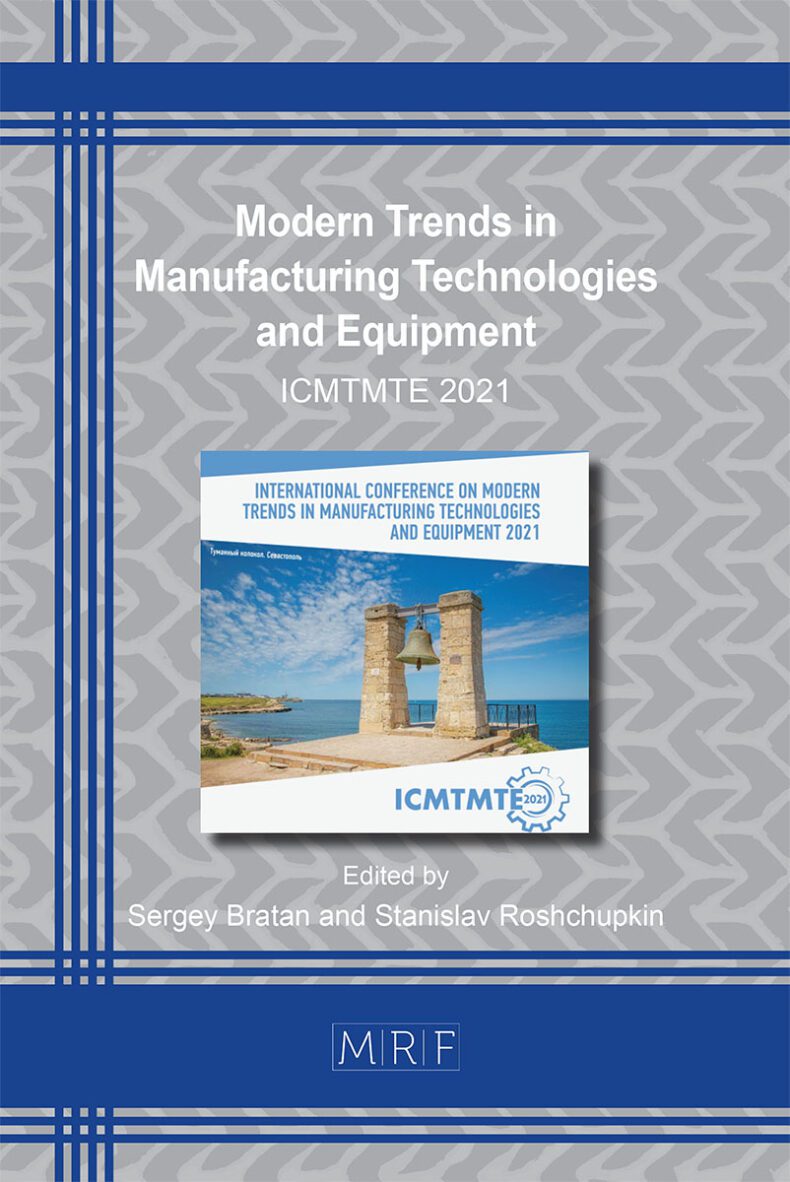Investigation of the Relationship of the Chemical, Phase Composition with the Mechanical Properties of the Transition Zone of the Welded Joint А182 + 321
V.B. Dementyev, A.A. Shushkov, S.L. Kim, V.V. Romanko
download PDFAbstract. The physical and mechanical characteristics of the transition zone of the welded joint of steels A182 + 321, obtained by explosion welding, have been investigated. The width of the transition zone of a bimetallic joint based on A182 and 321 steels has been measured in various ways: according to the calculated and experimental data, which are in good agreement, it is about 8 μm. The dependences of the average values of hardness and the reduced modulus of elasticity of the metal of the investigated transition zone and the steels that make up the bimetal are obtained. The hardness of steels prior to explosion welding is 3.11 GPa and 5.30 GPa, respectively. The average value of the transitional hardness takes a value close to the hardness of the base metal (0.17 units lower) and is 2.94 GPa. A similar relationship was found when measuring the elastic modulus. The phase composition of the explosion welded joint made of steels A182 and 321 was studied, the width of the transition zone was determined. The dependence of the amount of retained austenite on the content of Ni and Cr in the transition zone and the relationship with the reduced modulus of elasticity and hardness are established.
Keywords
Welded Connections, Transition Zone, Hardness, Elastic Modulus, Chemical and Phase Composition, Nanoindentation, NanoTest 600
Published online 1/5/2022, 12 pages
Copyright © 2022 by the author(s)
Published under license by Materials Research Forum LLC., Millersville PA, USA
Citation: V.B. Dementyev, A.A. Shushkov, S.L. Kim, V.V. Romanko, Investigation of the Relationship of the Chemical, Phase Composition with the Mechanical Properties of the Transition Zone of the Welded Joint А182 + 321, Materials Research Proceedings, Vol. 21, pp 1-12, 2022
DOI: https://doi.org/10.21741/9781644901755-1
The article was published as article 1 of the book Modern Trends in Manufacturing Technologies and Equipment
![]() Content from this work may be used under the terms of the Creative Commons Attribution 3.0 licence. Any further distribution of this work must maintain attribution to the author(s) and the title of the work, journal citation and DOI.
Content from this work may be used under the terms of the Creative Commons Attribution 3.0 licence. Any further distribution of this work must maintain attribution to the author(s) and the title of the work, journal citation and DOI.
References
[1] Moskvitin S.P., Pudovkin A.P. Method and system for quality control of bimetal // Bulletin of TSTU. 2009. T. 15, No. 2. pp. 315-320.
[2] Gurevich L.M., Trykov Yu.P., Arisova V.N. et al. Structure and micromechanical properties in BT -0 + AD1 bimetal obtained by explosion welding according to the angular scheme. Izvestiya Volgograd State Technical University. 2010. T. 4, No. 4. pp. 38-42.
[3] Trykov Yu.P., Pronichev D.V., Gurevich L.M. et al. Investigation of heat and electrical conductivity of SIK titanium-steel, Bulletin of the Volgograd State Technical University. 2010. T. 4, No. 4. pp. 17-21.
[4] Trudov AF, Trykov Yu.P., Klochkov SV, Dontsov D.Yu. Influence of heating on the structure and properties of the explosion-welded bimetal St.3 + 12X18H10T, Bulletin of the Volgograd State Technical University. 2008. T. 10, No. 2. pp. 18-22.
[5] Los I.S., Rosen A.E., Perelygin Yu.P., Pervukhin L.B., Usatii S.G., Khorin A.V. Investigation of the structure and properties of a multilayer corrosion-resistant material obtained by welding of explosions, Bulletin of the Volgograd State Technical University. 2010. T. 5, No. 4. pp. 93-96.
[6] Soloviev S. D., Dementyev V. B. Kinetics of the formation of interatomic bonds in bimetals. Izhevsk: IPM Ural Branch of the Russian Academy of Sciences, 2006. p. 152.
[7] Slyusarev M.V. Investigation of the parameters of the qualities of bimetallic sheets, Bulletin of the Volgograd State University. Series 9: Research by Young Scientists. 2007. No. 6. pp. 176-182.
[8] Denisov I.V., Pervukhin LB, Pervukhina O.L., Rosen A.E. Deformation processes in explosion welding, Bulletin of the Volgograd State Technical University. 2008. No. 6. pp. 39-45.
[9] Lysak V.I., Kuzmin S.V. Microinhomogeneity of welded explosions of joints, Bulletin of the Volgograd State Technical University. 2004. No. 6. pp. 4-22.
[10] Kim S.L., Dementyev V.B., Soloviev S.D. Mathematical modeling of the formation of interatomic bonds in bimetallic compounds, Chemical Physics and Mesoscopy. 2008. Vol.10, No. 4. pp. 419-427.
[11] Steklova E.O., Soloviev S.D., Kim S.L. Application of the thermopower method in the study of the chemical composition and structural state of welded joints, Welding and diagnostics. 2011. No. 2. pp. 10-13.
[12] Oliver W., Pharr G. An Improved Technique for Detemining Hardness and Elastic Modulus Using Load and Displacement Sensing Indentation Experiments, J. Mater. Res. 1992.№ 7(6). pp. 1564-1583. https://doi.org/10.1557/JMR.1992.1564
[13] Kim S.L. Investigation of the formation of a chemical bond in the production of bimetals based on the kinetics of interaction of atoms, Avtoref. diss. for the degree of Cand. phys-mat. sciences. Izhevsk, 2010.20 p.
[14] Fedosov SA, Peshek L. Determination of mechanical properties of materials. Modern foreign techniques. M.: Publishing house. Faculty of Physics, Moscow State University, 2004.98 p.































